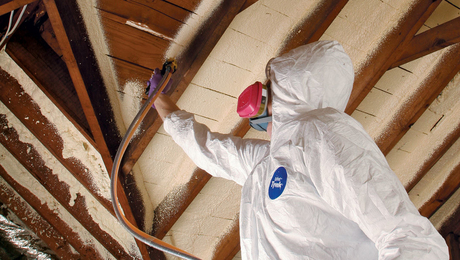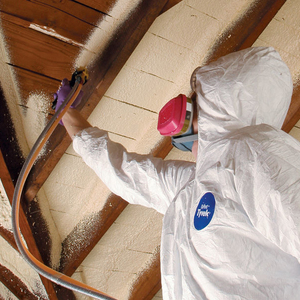Has anyone else rolled block filler on smooth walls to amplify the roller texture? We’re always combining old plaster walls and new construction and have relied on multiple coats of paint rolled on to get a decent “texture” on the smooth walls, but we had a rush job just prior to thanksgiving and gave concrete block filler/primer a try and it worked great!
This stuff rolls on with a slightly exagertated roller texture with a simple 1/2″ nap roller.
We rolled pva primer and coated with two color coats and then tried block filler and two color coats. Hands down the block filler makes a better roller texture.
As we touch up or patch sections of the old walls, we’ll roll a couple coats of the block filler over the area and it really helps to blend the old with new.
Good building
Beer was created so carpenters wouldn’t rule the world.



















Replies
Hey thanks - That's a super idea I'm going to have to try - I've used the 1"+ nap rollers, but yer way's probably better.
Forrest
So far I'm sold on the stuff. Even though the material is quite thick, the application to get the desired texture is quite economical, about the same as a coat of paint.
The down side to this stuff is you have to carefully watch your roller pattern and amount of material applied since too much material creates a completely different pattern.
We ran out of time after taping tons of cracks in a plastered ceiling, with only one coat of mud over the tape. We had to have the space as ready as possible for turkey day, even if we needed to go back finish the taping and repaint. It was quite impressive how much of the obviously half finished surface was hidden with the block primer for a texture and flat paint.
Now that we're reskiming the area, even with a worklight at ceiling level, it's a challenge to see the high and low spots.
The texture is really something and I'll try to get a good closeup. Now that I've been around it a bit I'd almost describe it as a surface that been evenly sprinkled with fine sand and painted over 3-4 times.
Good building
Beer was created so carpenters wouldn't rule the world.
Don-
Do use use plaster washers before taping those ceiling cracks?
Thanks
Up to now we haven't used the washers since we usually just tear out anything not up to speed and replace with drywall, but I do have them on my list of things to order just to have on hand.
The cracks we're taping are quite small for the most part and we tape them just for appearance sake.
If the plaster is loose we cut around it along the ceiling joist layout and replace with 5/8" sheetrock shimed to be level with the plaster. It's often as easy to replace a 4x8' section as anything smaller. If it's really bad it's probably worthwhile to take the whole ceiling or wall down to the framing and start from scratch.
Having said that, a plumber recently stepped through one of our ceilings while running a vent and the washers would have made the repair faster and easier.
Good building!
Beer was created so carpenters wouldn't rule the world.